Your Dryer Is Trying to Tell You Something. Are You Listening?
Let’s be honest, you probably don’t think much about your clothes dryer. It’s the loyal workhorse of the laundry room—a simple box that tumbles and heats. But after spending more years than I can count with my hands inside these machines as a repair tech, I can tell you they demand a bit of respect. I’ve seen it all: motors burned out from overwork, vents completely blocked with pet hair, and yes, the scary aftermath of fires that started from simple, preventable issues.
In this article
- How Your Dryer Actually Works (The 3-Part Magic Trick)
- The Lint Screen: More Than Just Fluff
- The Dryer Vent: The Real Danger Zone
- Loading It Right: Sort by Weight, Not Just Color
- Which Button Should You Actually Be Pushing?
- Which Type of Dryer is Right for You?
- When to Back Away and Call for Help
- Galerie d’inspiration
This isn’t about fear-mongering. It’s about pulling back the curtain and sharing the kind of insider knowledge that keeps a dryer running safely and efficiently for a decade or more. A well-maintained machine doesn’t just lower your energy bills; it protects your clothes and, most importantly, your home. So, let’s skip the fluff and get into what really makes your dryer tick.
How Your Dryer Actually Works (The 3-Part Magic Trick)
To keep any machine happy, you first have to understand its job. A dryer’s only goal is to pull moisture out of fabric, and it does this with a simple but powerful combination of heat, airflow, and movement. When any one of these is off-balance, you get damp clothes, high energy bills, and serious safety risks.
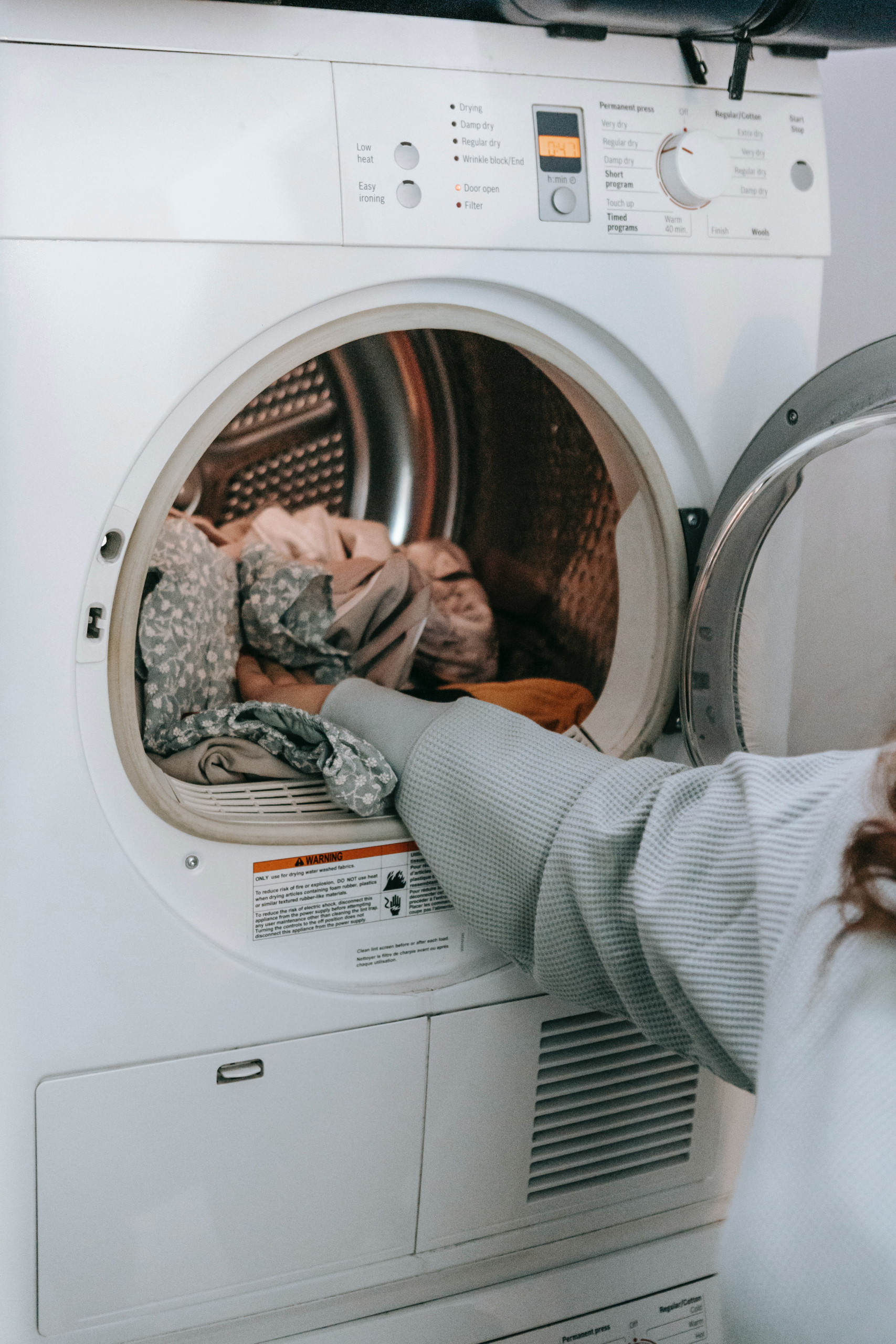
1. Heat: The Evaporation Engine
First up is heat. An electric dryer uses big heating coils (think of an old-school stove burner), while a gas dryer uses a small burner. This heat warms up the air inside the drum, allowing it to soak up moisture from your wet laundry. It’s just basic evaporation, but on fast-forward. While thermostats keep things from getting out of control, constant high heat is brutal on fabrics, making cotton brittle and damaging synthetics over time.
2. Airflow: The Most Important (and Neglected) Part
Now for the real MVP: airflow. Honestly, this is the system most people completely ignore, and it’s the root of 90% of dryer problems. A fan, called a blower wheel, sucks air into the machine, pulls it over the heating element, and then sends that hot air into the drum. As your clothes tumble, this stream of hot air grabs moisture and lint, gets pulled through the lint screen, and is finally pushed out the exhaust vent to the outside world. If that path is blocked anywhere, the whole process breaks down. Hot, humid air gets trapped, your clothes tumble around in a steamy sauna without ever getting dry, and all that trapped lint becomes a tinderbox waiting for a spark.
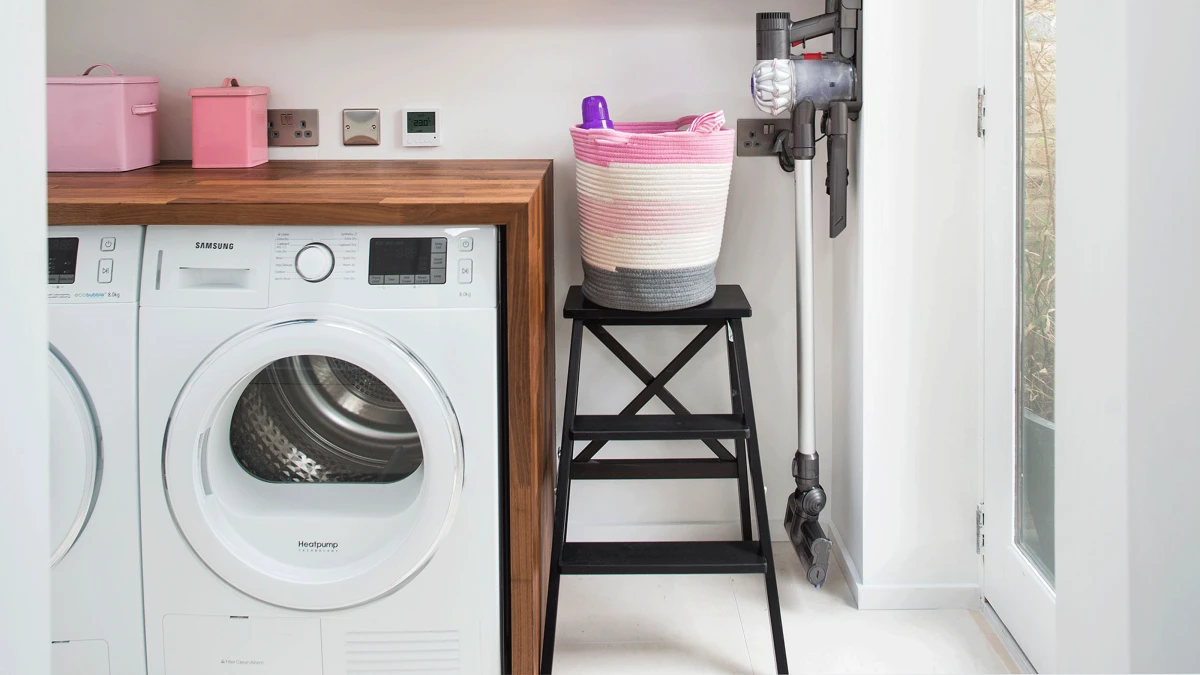
3. Tumbling: The Mechanical Muscle
Finally, you have the tumbling action. That big rotating drum, with its fins (or “baffles”), is designed to lift and separate clothes so the hot air can touch every single surface. Without it, you’d just be baking a giant, wet clump of laundry. By the way, the same motor that spins the drum also powers the airflow fan, so if you have a motor or belt issue, you lose both tumbling and airflow at the same time.
The Lint Screen: More Than Just Fluff
Everyone knows to clean the lint screen, but there’s a right way and a wrong way. And that lint? It’s not harmless fluff. It’s a highly flammable mix of fabric fibers, dust, and hair. Cleaning it after every single load—no exceptions—is your first and easiest line of defense.
But here’s a pro tip that solves a mystery for many homeowners.
The Hidden Residue Problem
Dryer sheets and fabric softeners leave behind a thin, invisible waxy film on the mesh of your lint screen. Over time, this film clogs the tiny holes, choking off the airflow even when the screen looks perfectly clean. I can’t tell you how many service calls I’ve been on where the owner swears they clean the screen every time, and they’re right—but the screen is still suffocating the machine.
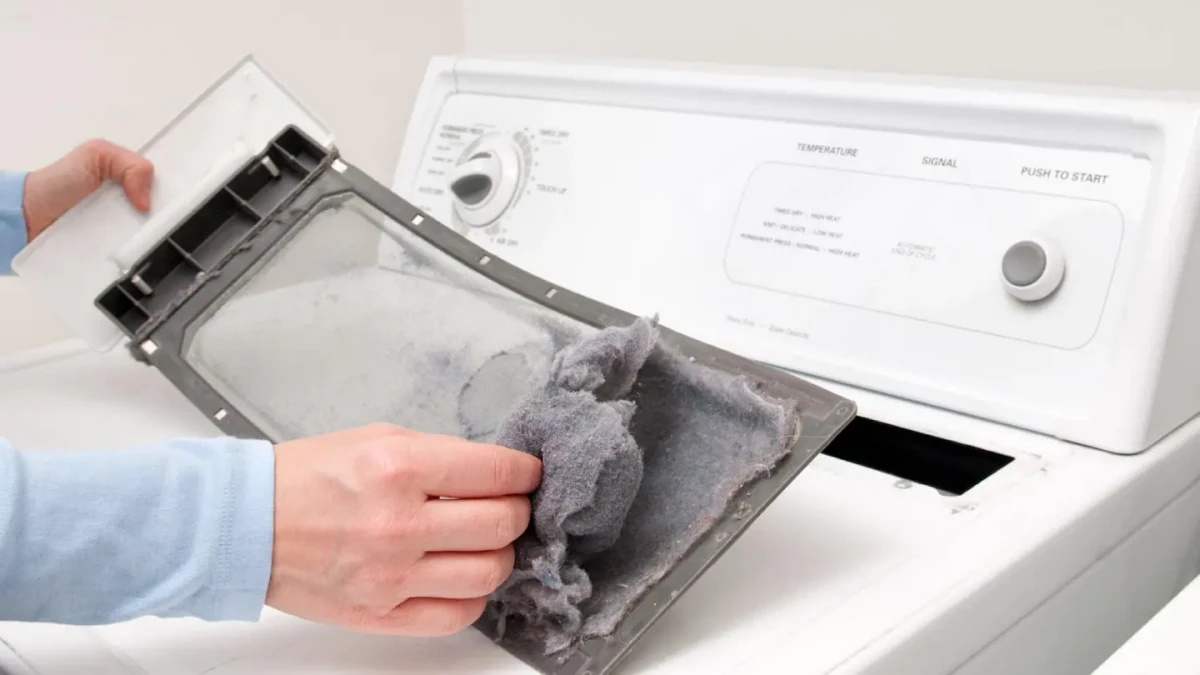
Do This 2-Minute Test Right Now:
Pull out your lint screen and run it under a faucet. Does the water pass straight through? Or does it bead up and pool on the surface? If it pools, your screen is clogged with residue. To fix it, just take a soft brush (an old toothbrush is perfect), some hot water, and a drop of dish soap. Gently scrub both sides, rinse it well, and let it dry completely before putting it back. Doing this once a month can completely transform your dryer’s performance.
The Dryer Vent: The Real Danger Zone
Your lint screen only catches about 25% of the lint. The rest gets pushed into the exhaust vent system, and that’s where the real trouble begins. A clogged vent is the number one cause of dryer fires, period. I’ve personally cleaned vents so packed with lint that it looked like a felt log—it’s a miracle any air was moving at all. One time, I pulled out an entire, fully constructed bird’s nest. Those little guys had found a warm spot to live, completely blocking the vent flap and creating a massive fire hazard.
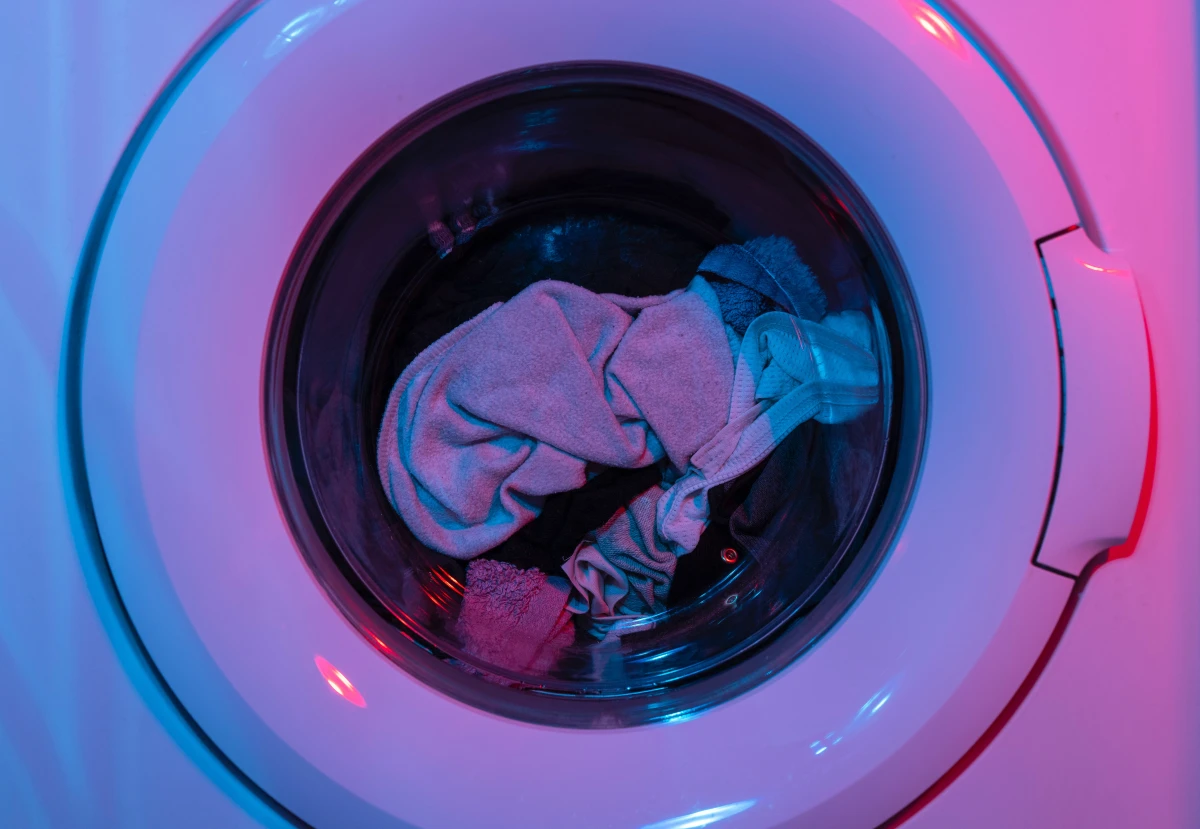
Heads up! If you have a white, flexible, plastic-looking duct connecting your dryer to the wall, you need to replace it immediately. That flimsy vinyl tubing is a major fire hazard; it traps lint in its ribbed interior and can easily catch fire itself. It’s not approved by modern building codes for a reason.
For the connection behind your dryer, you want a semi-rigid aluminum duct that meets the UL 2158A standard. You can find these at Home Depot, Lowe’s, or online for about $15-$30. They are much safer and their smoother interior helps prevent lint buildup.
A Quick Guide to Cleaning Your Vent System:
The entire vent line—from the back of the dryer all the way to the outside of your house—should be cleaned at least once a year. If you have a large family and do laundry constantly, make it every six months.
- DIY vs. Pro: You can buy a DIY cleaning kit with a brush and flexible rods for around $20-$50. These are fine for very short, straight vent runs—I’d say anything under 10 feet with no sharp turns. But be warned: if your vent is long or has several bends, these kits can easily get stuck or break off inside the duct, creating a much bigger problem.
- When to Call a Pro: Honestly, for most homes, hiring a professional duct cleaning service is worth every penny. They use high-powered vacuums and air tools to do the job right. Expect to pay somewhere between $100 and $250, depending on the length and complexity of your vent. It’s a messy job, and they have the right equipment to handle it safely.
Your dryer will warn you when the vent is getting clogged. If your clothes suddenly take two cycles to dry, the top of the dryer feels hot to the touch, or you notice the flap on your exterior vent isn’t opening, stop using it and get that vent checked out.
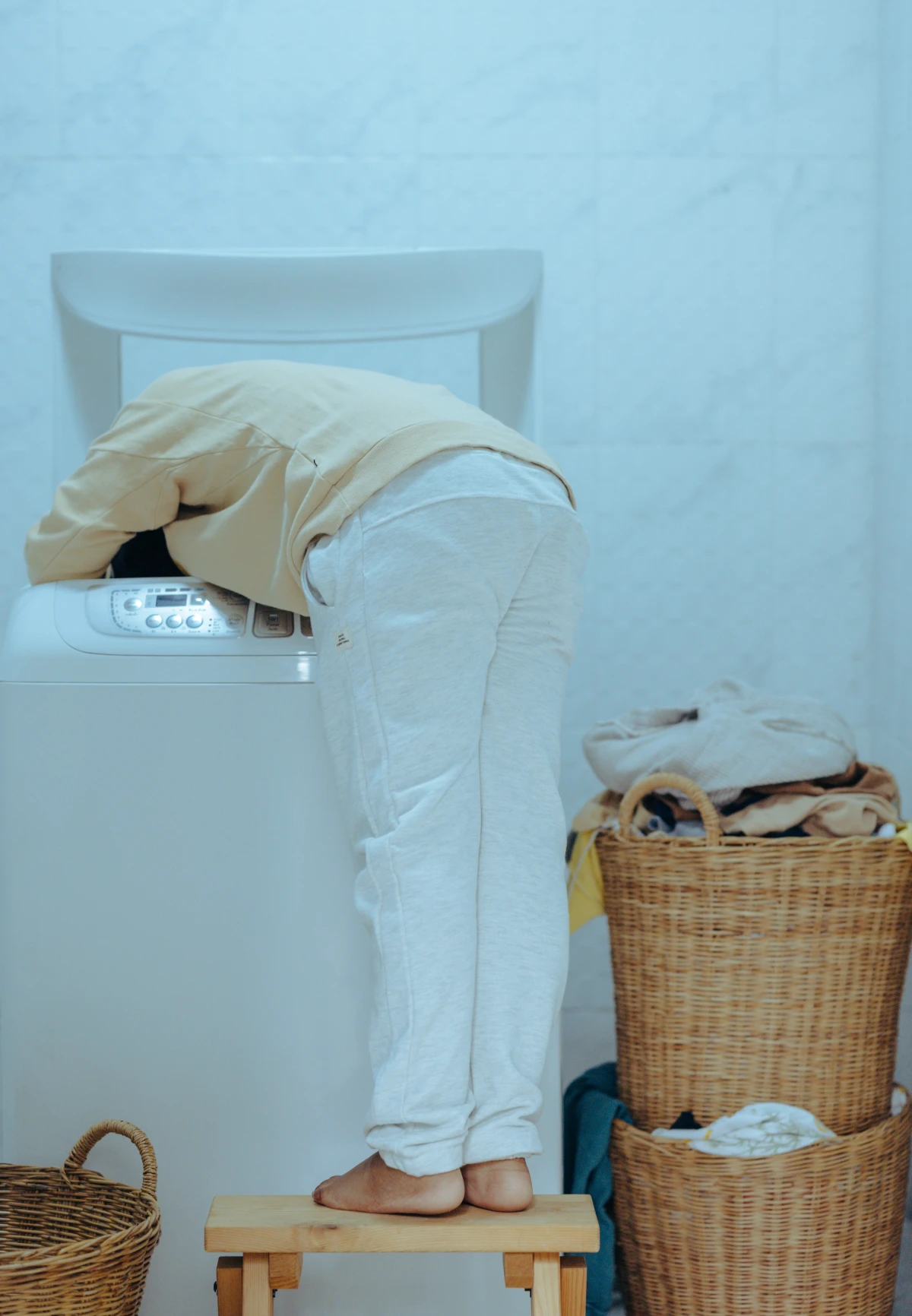
Oh yeah, and don’t forget the cavity where the lint screen slides in. Lint loves to build up down there. Unplug your dryer, and use the narrow crevice tool on your vacuum to suck out all the debris you can reach. You’d be surprised what you find.
Loading It Right: Sort by Weight, Not Just Color
How you load the machine matters more than you think. A dryer drum is bigger than a washer’s for a reason—clothes need room to tumble and get hit by that hot air. A good rule of thumb is to never fill the dryer more than halfway with wet clothes.
And for maximum efficiency, sort your loads by weight. Heavy towels and jeans take way longer to dry than lightweight shirts and synthetics. When you mix them, the light stuff gets baked into oblivion while you wait for the heavy items to dry. This is what causes fading, shrinking, and damage to the elastic in your clothes. Drying them in separate, appropriate cycles is much gentler and more energy-efficient.

Which Button Should You Actually Be Pushing?
Most people just crank the dial to “Timed Dry” for 60 minutes and call it a day. You’re missing out on the best feature your dryer has!
The “Sensor Dry” or “Auto-Dry” cycle is your best friend. It uses two little metal strips inside the drum to detect moisture in your clothes. As the clothes tumble and touch the strips, the machine measures their conductivity. Once the clothes are dry, the sensor knows to shut the cycle off. This prevents over-drying, protects your clothes from heat damage, and saves a ton of energy. Use it for almost every load.
Here’s a quick rundown of what the other cycles are for:
- Permanent Press: Medium heat followed by a cool-down tumble. This is the best all-around cycle for most mixed loads, as the cool-down phase helps prevent wrinkles from setting.
- Delicates: Low heat, plain and simple. Use it for athletic wear, rayon, and anything you don’t want to shrink.
- Air Fluff (No Heat): Just tumbles with room-temperature air. Perfect for freshening up clothes from storage or fluffing a comforter.
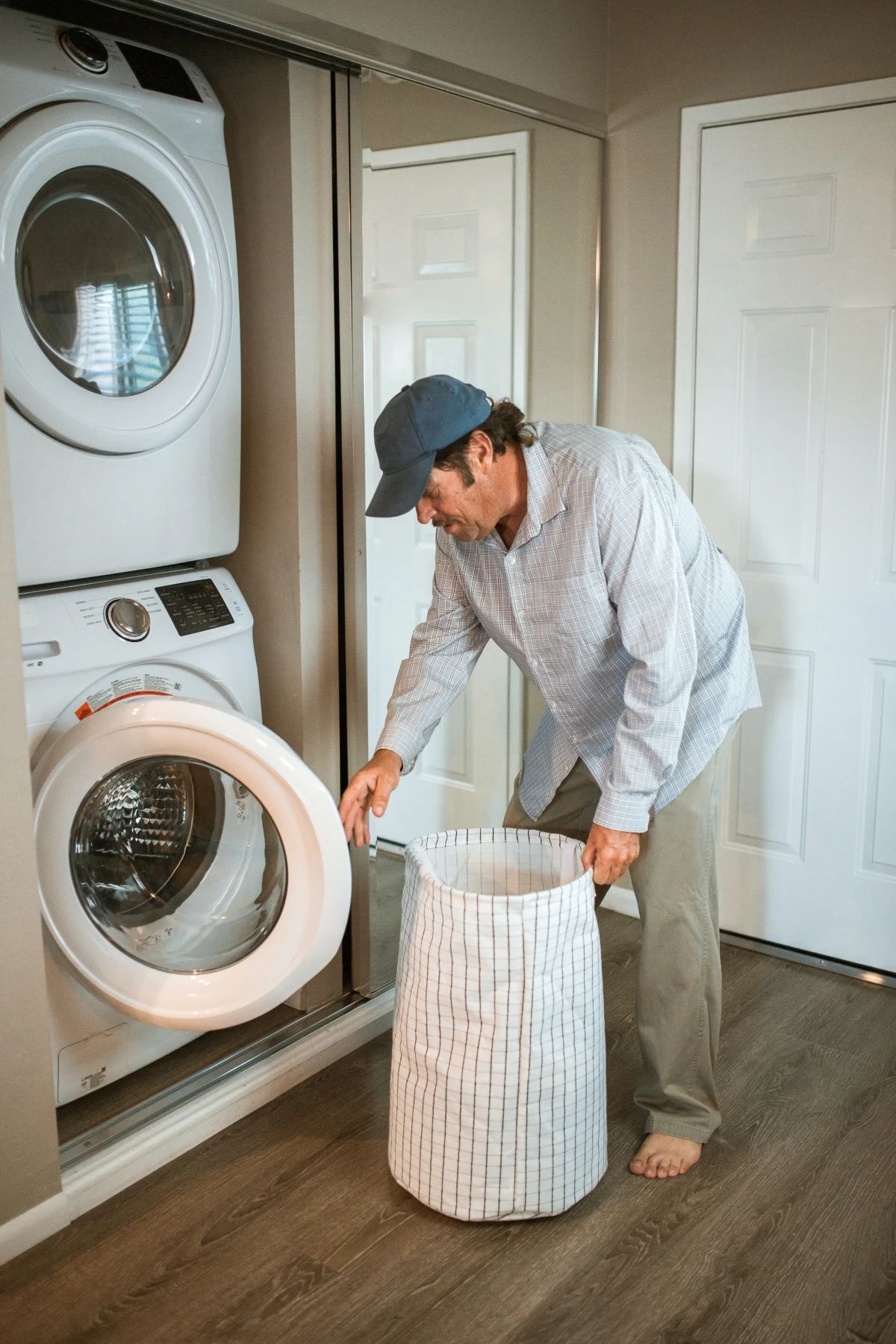
Which Type of Dryer is Right for You?
The classic vented dryer is king in most single-family homes, but if you’re in an apartment or condo, you might have other options. Here’s a quick, no-table breakdown:
Standard Vented Dryers (Gas or Electric)
These are the machines we’ve been talking about. They’re simple, effective, and dry clothes the fastest. They absolutely must be vented to the outdoors. An electric model will typically run you $500 to $900, while a gas version is slightly more, from $600 to $1,000. The long-term operating cost depends on your local utility rates.
Ventless Condenser Dryers
Common in apartments where outdoor venting isn’t possible. These machines collect moisture from your clothes into a tray that you have to empty, or they drain it through a hose. They work well but use more energy and take longer to dry a load. You also have to clean their condenser coils every few months to prevent clogs. Expect to pay in the $900 to $1,500 range.
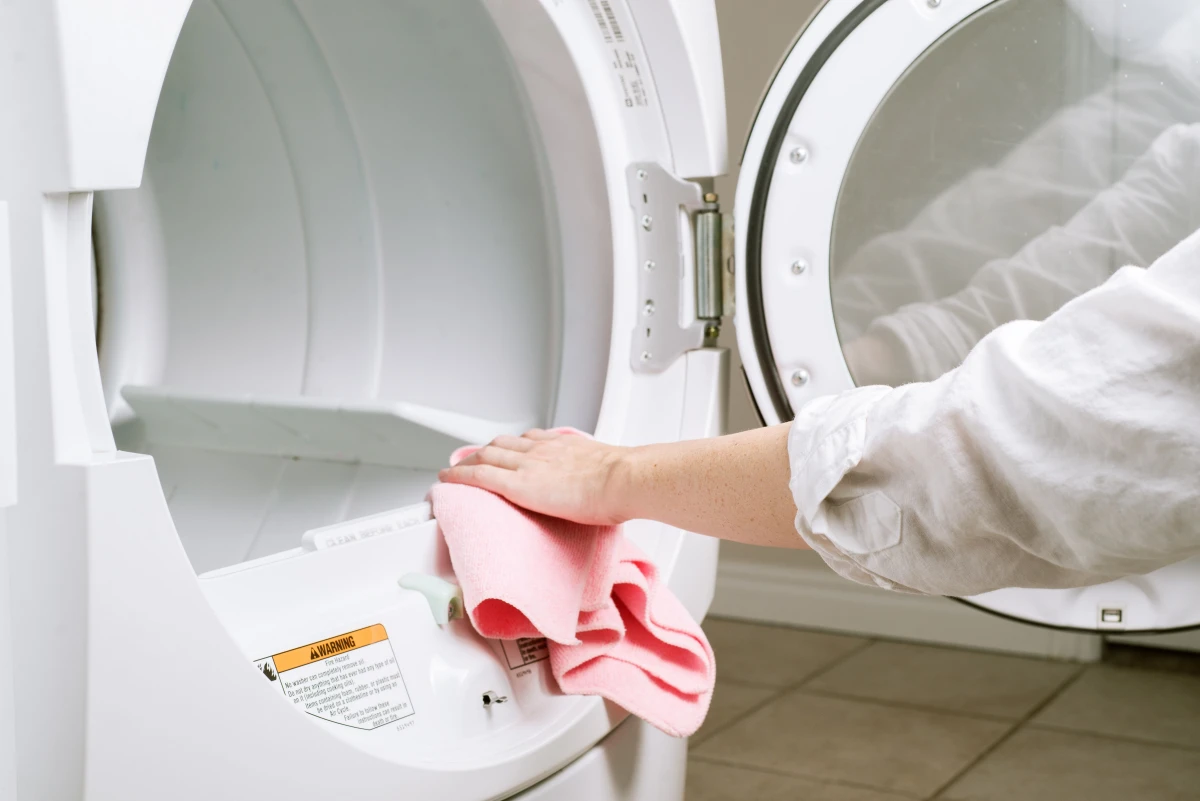
Ventless Heat Pump Dryers
These are the most energy-efficient dryers on the market, using up to 50% less electricity than a standard model. They use a clever closed-loop system to recycle heat, but the trade-off is much longer drying times—a load might take an hour and a half instead of 50 minutes. They are also the most expensive upfront, often starting at $1,200 and going up from there. It’s a choice between saving time or saving energy.
When to Back Away and Call for Help
Before you even think about poking around your dryer, unplug it. For electric dryers, pull that big, heavy-duty cord from the wall. For gas models, unplug the standard power cord and turn off the gas supply valve. Safety first, always.
And please, never put items with rubber or foam (like some bath mats) or anything that’s been soaked in a flammable liquid (like oily rags from the garage) in your dryer. That’s how fires start.
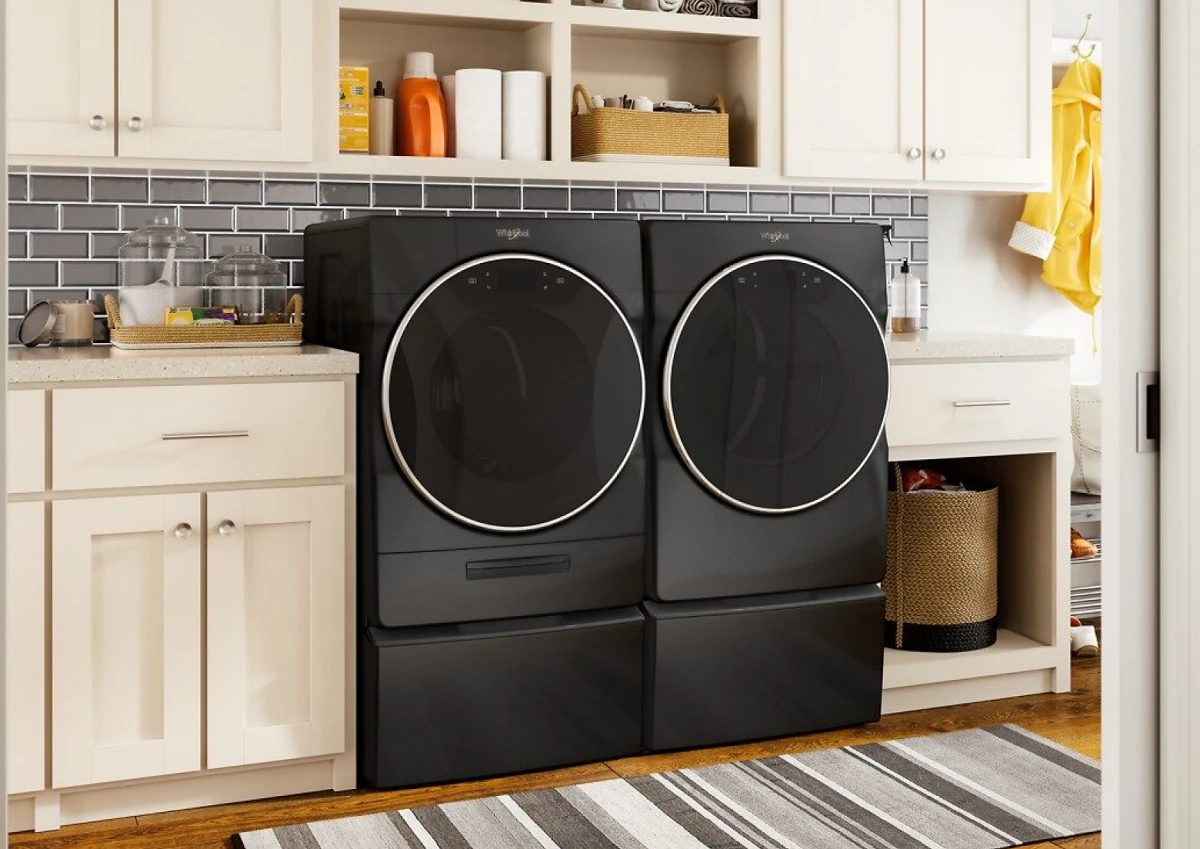
While you can handle the maintenance, some things require a pro. Call a qualified technician if:
- The drum won’t turn or you hear a loud grinding or scraping sound.
- You’re getting a rhythmic thump-thump-thump with every rotation, even when the drum is empty. That’s not a sneaker—it’s likely a worn-out drum roller.
- The dryer runs but produces no heat.
- You smell gas (for gas dryers) or a strong electrical burning smell. Get out of the house immediately and call for help from a safe distance.
A few minutes of care a month goes a long way. Treat your dryer well, and it’ll return the favor for years to come.
Galerie d’inspiration
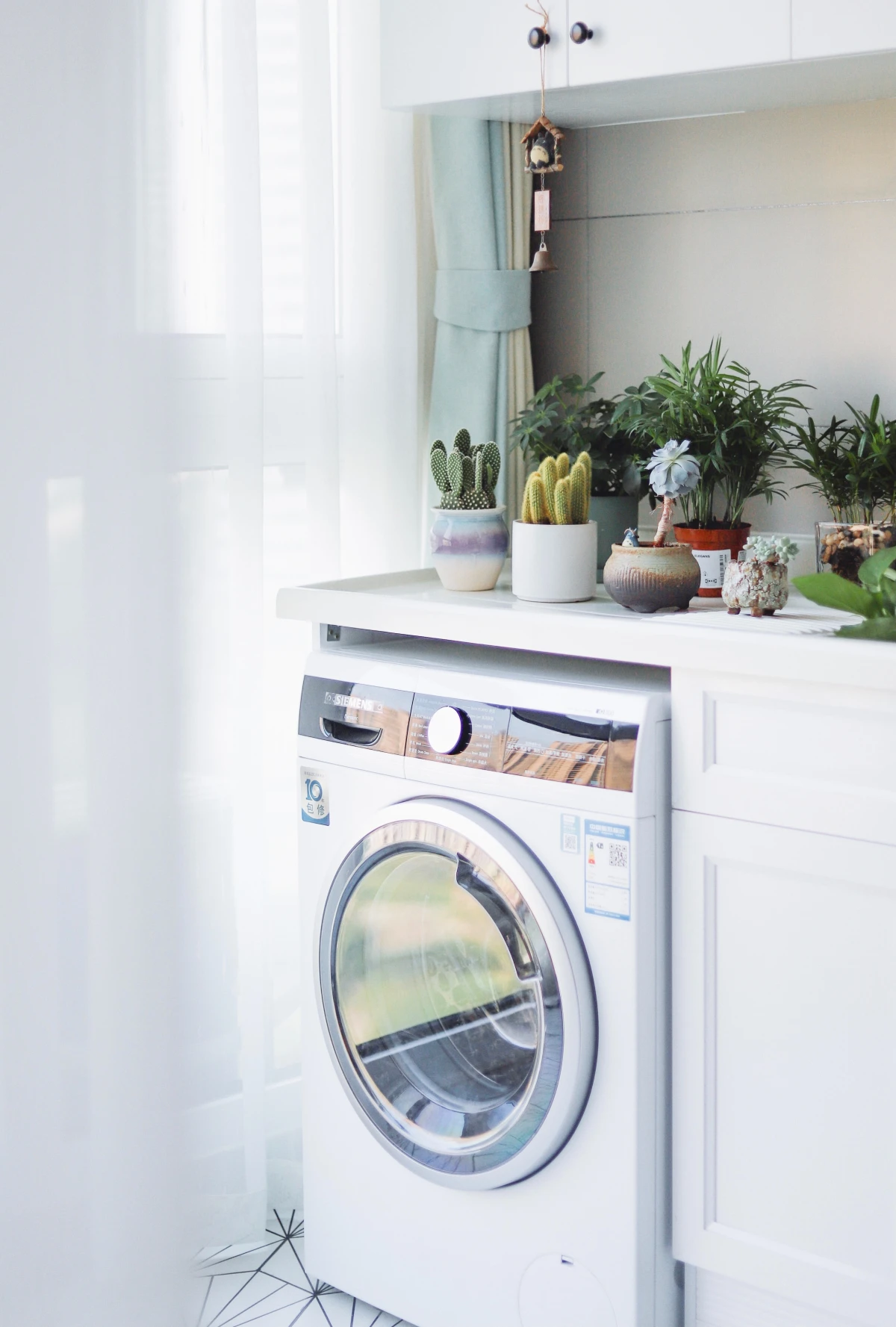
What’s that faint burning smell when the dryer is running?
If you notice a hot, slightly acrid smell, don’t ignore it. It’s often the first sign that your dryer’s airflow is compromised. When lint builds up in the exhaust vent, hot, moist air can’t escape. This forces the heating element to work overtime, essentially “cooking” the trapped lint and creating that distinct odor. Before it becomes a fire hazard, turn off the dryer, disconnect the power, and thoroughly clean the entire vent path from the back of the machine to the outside of your house.










